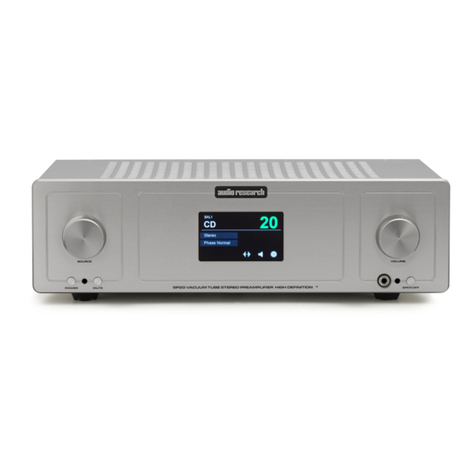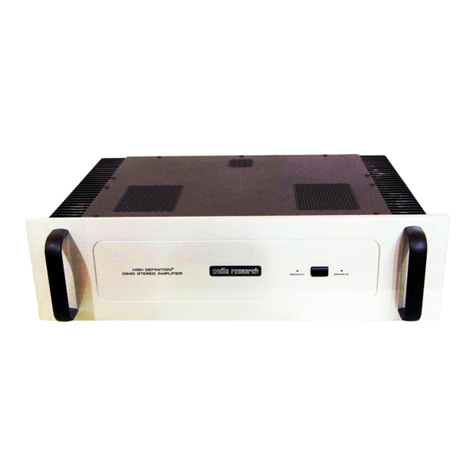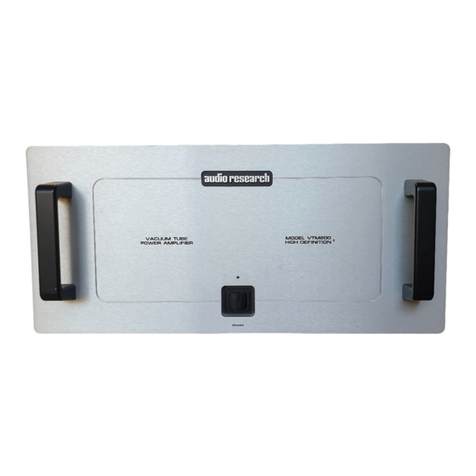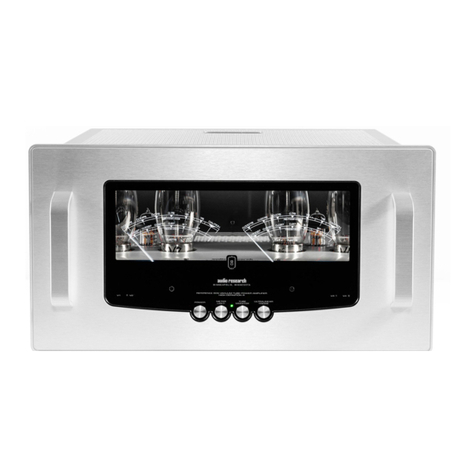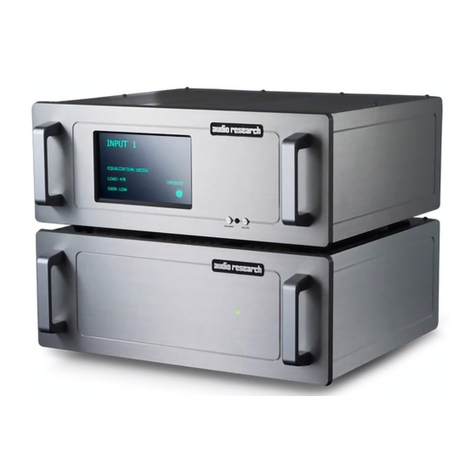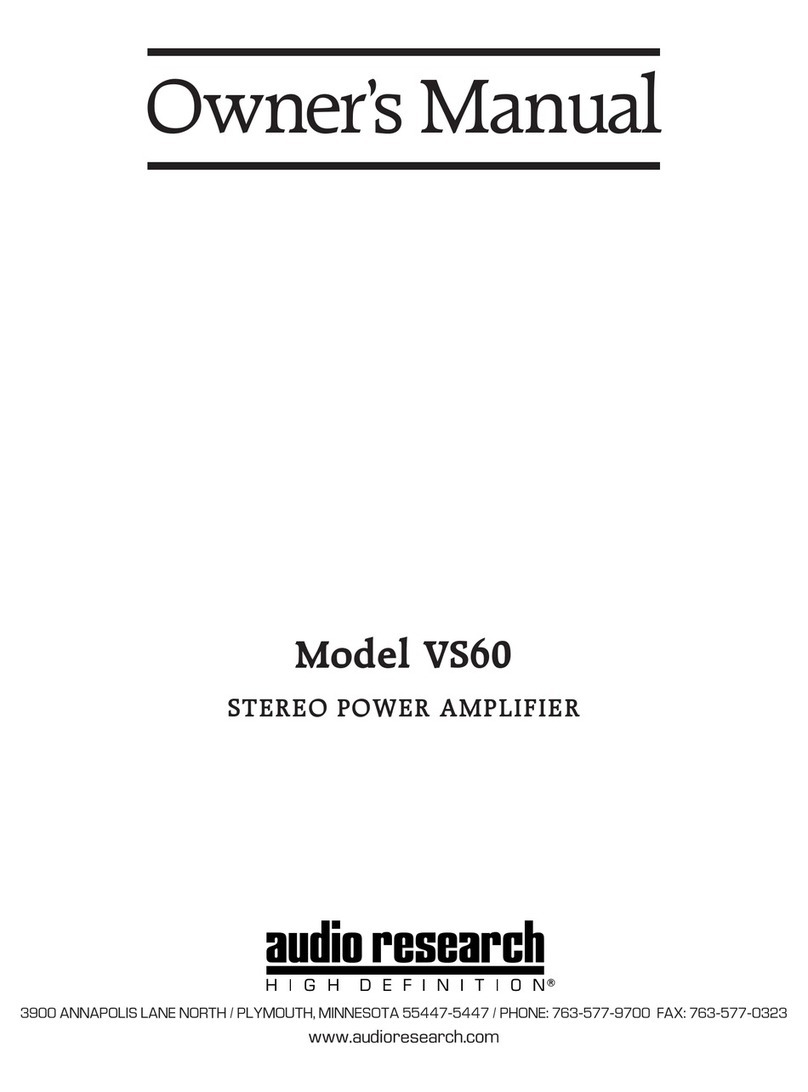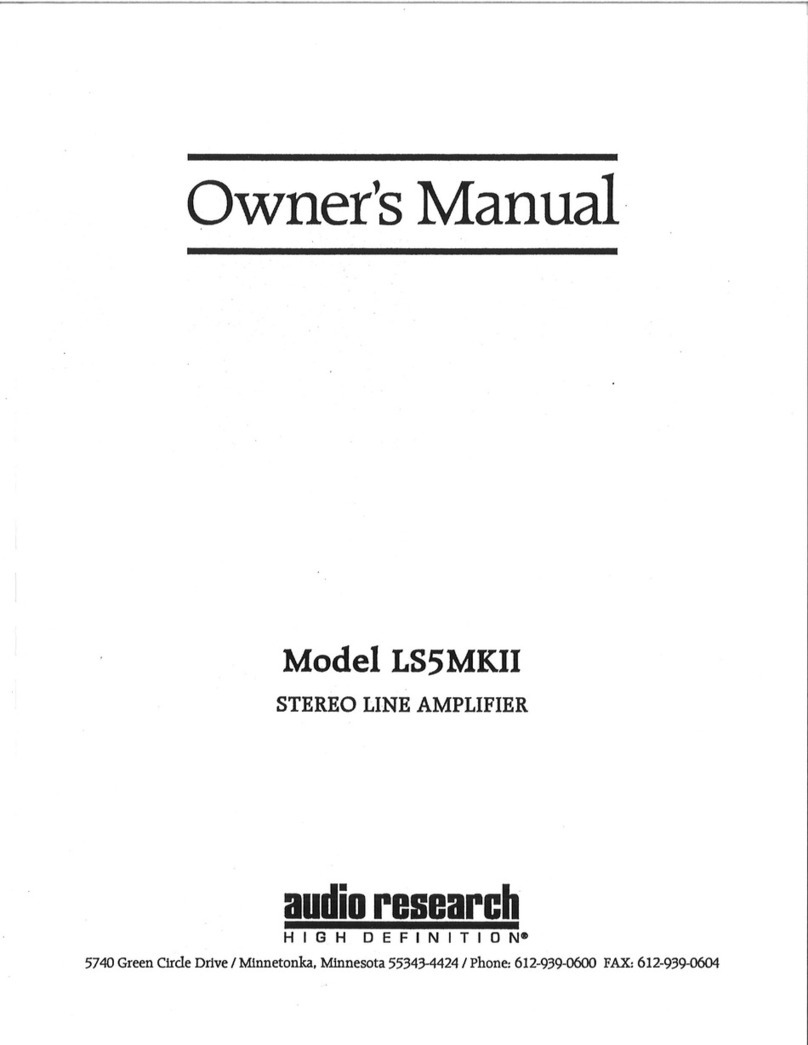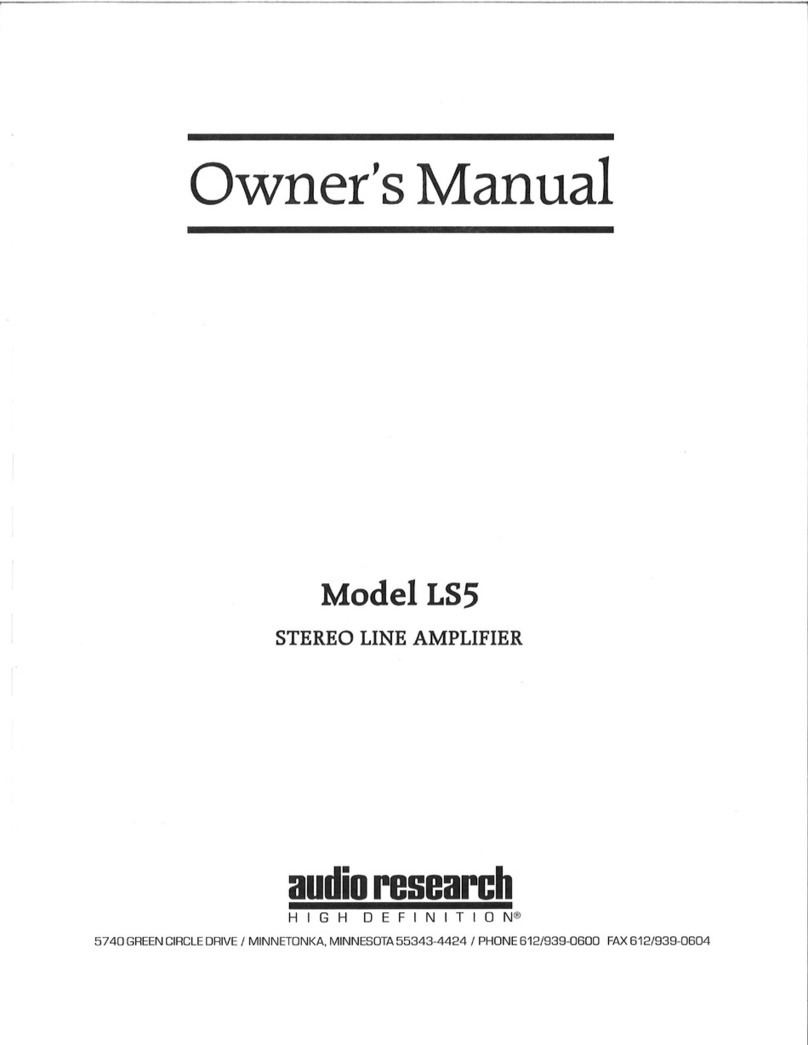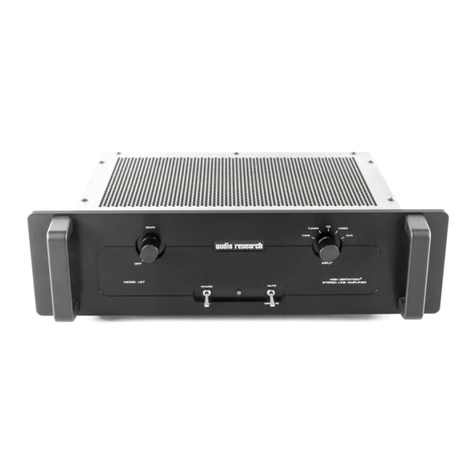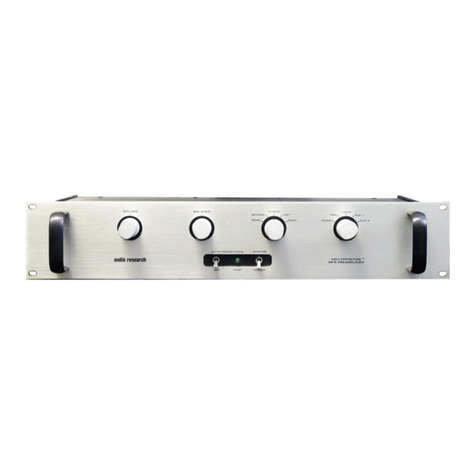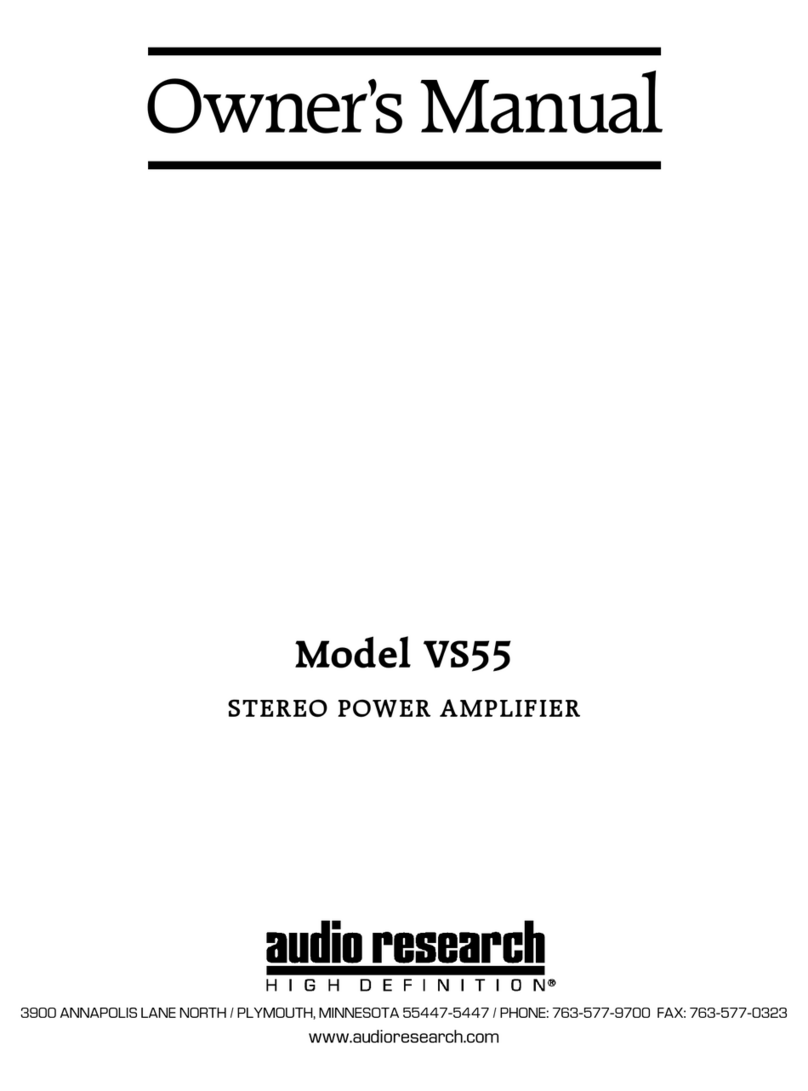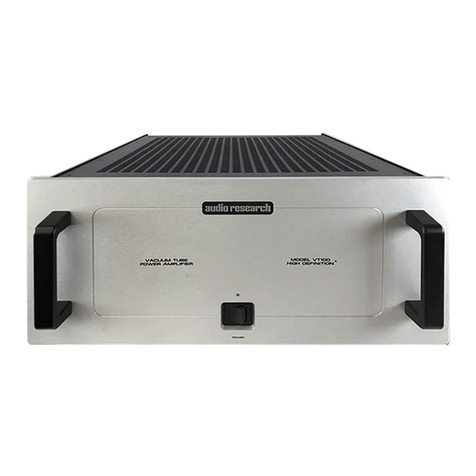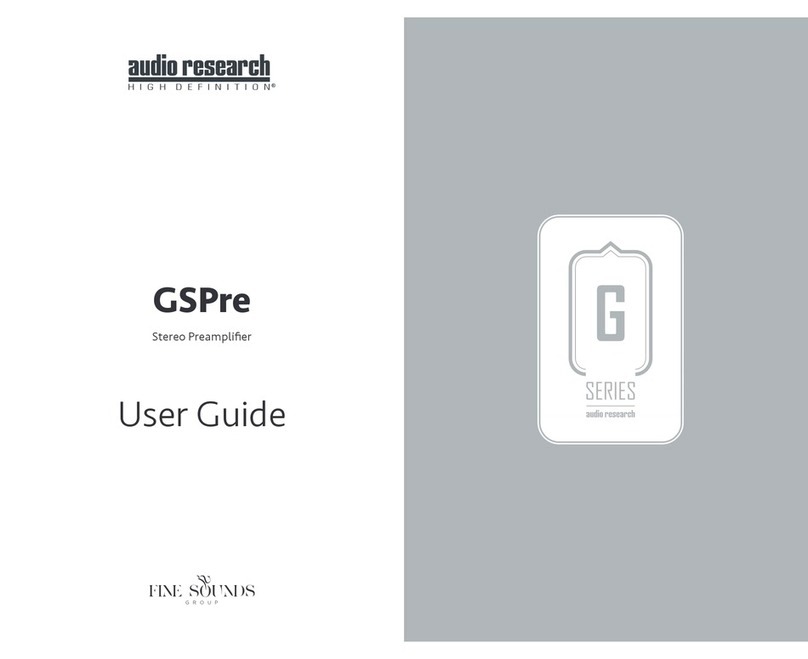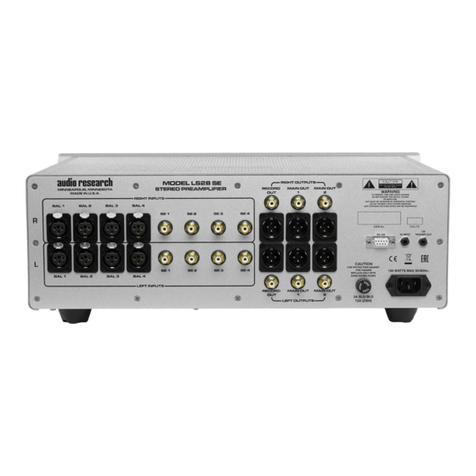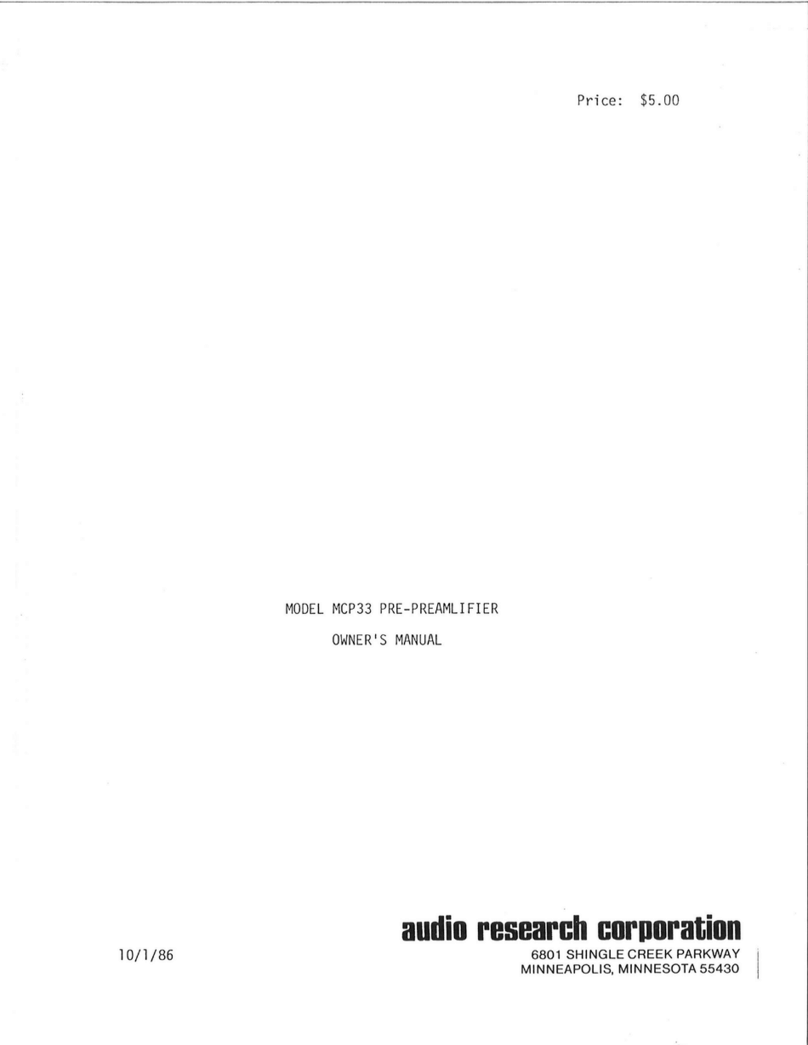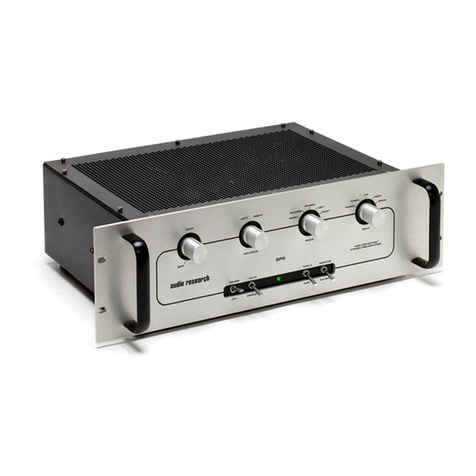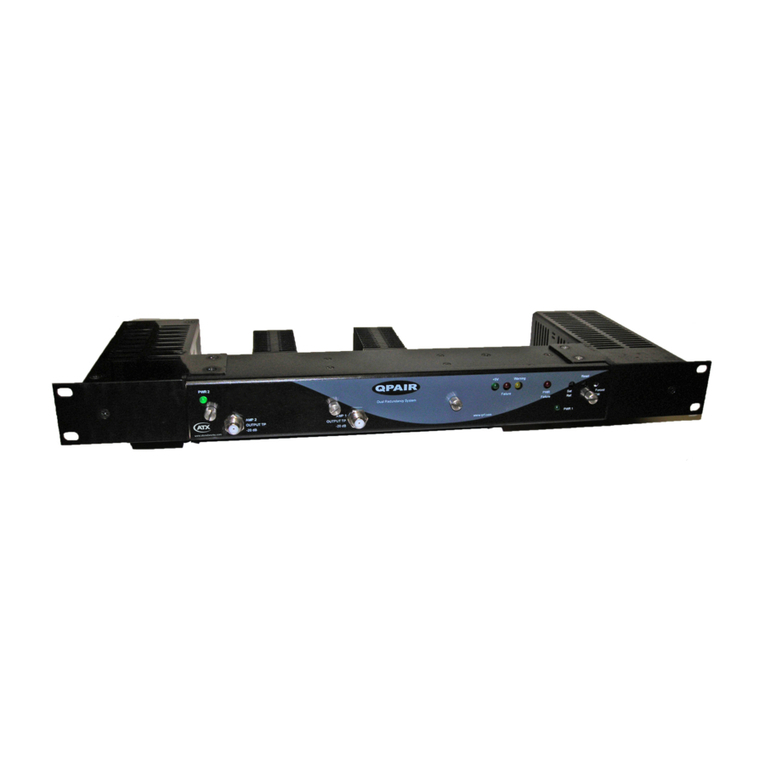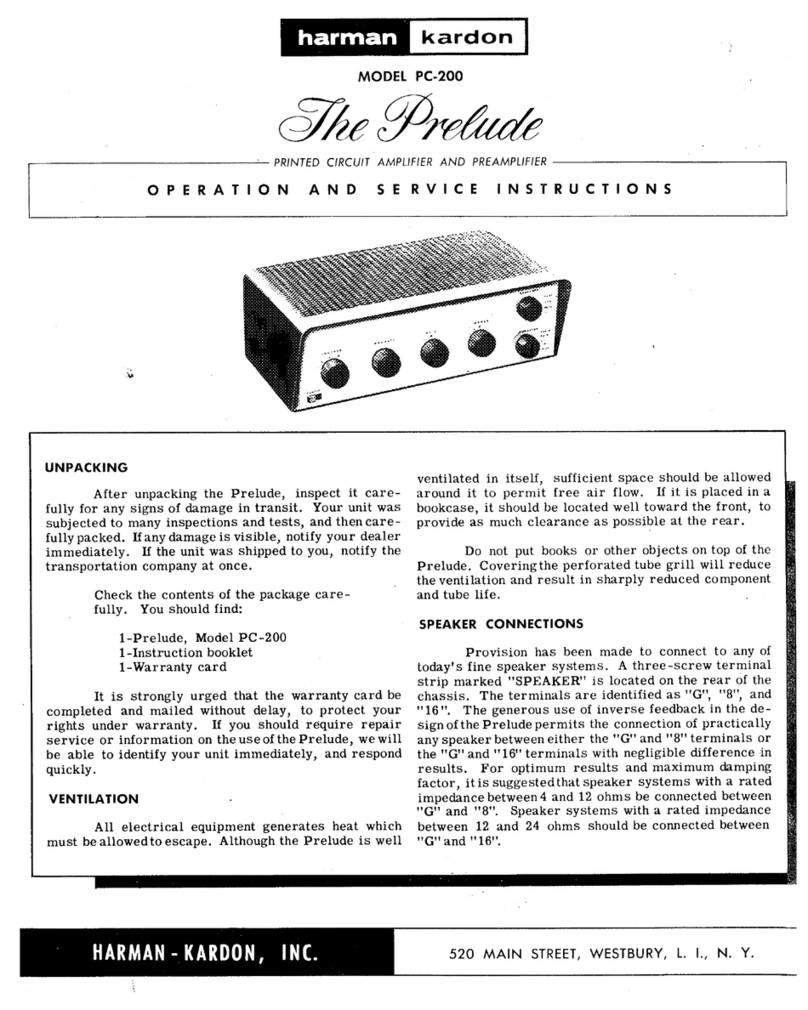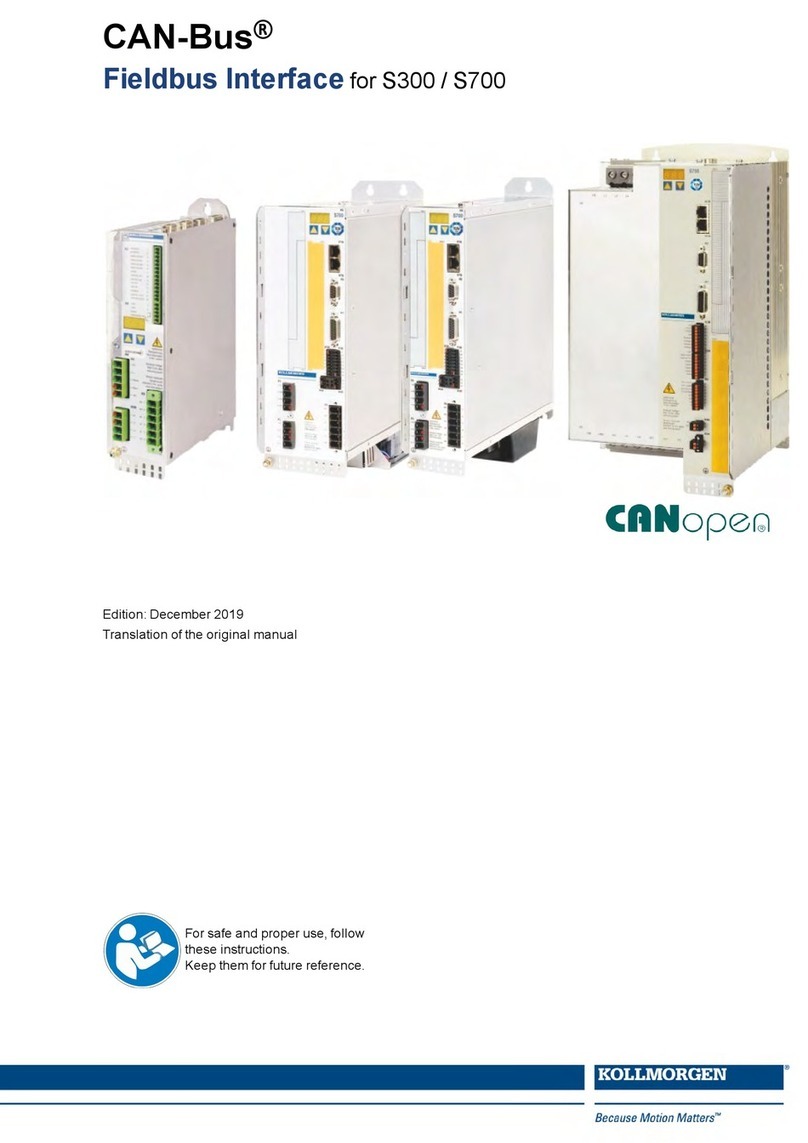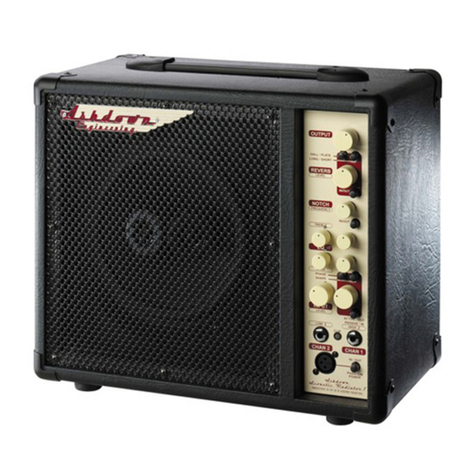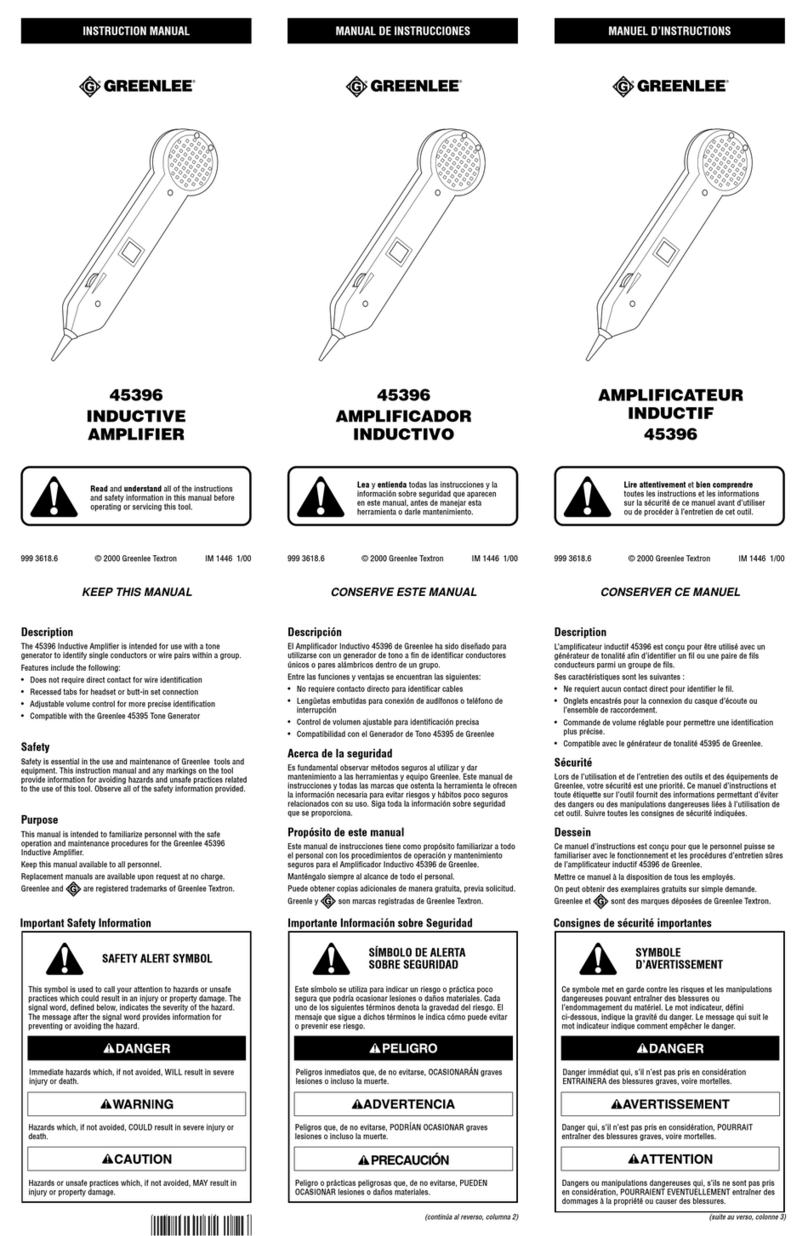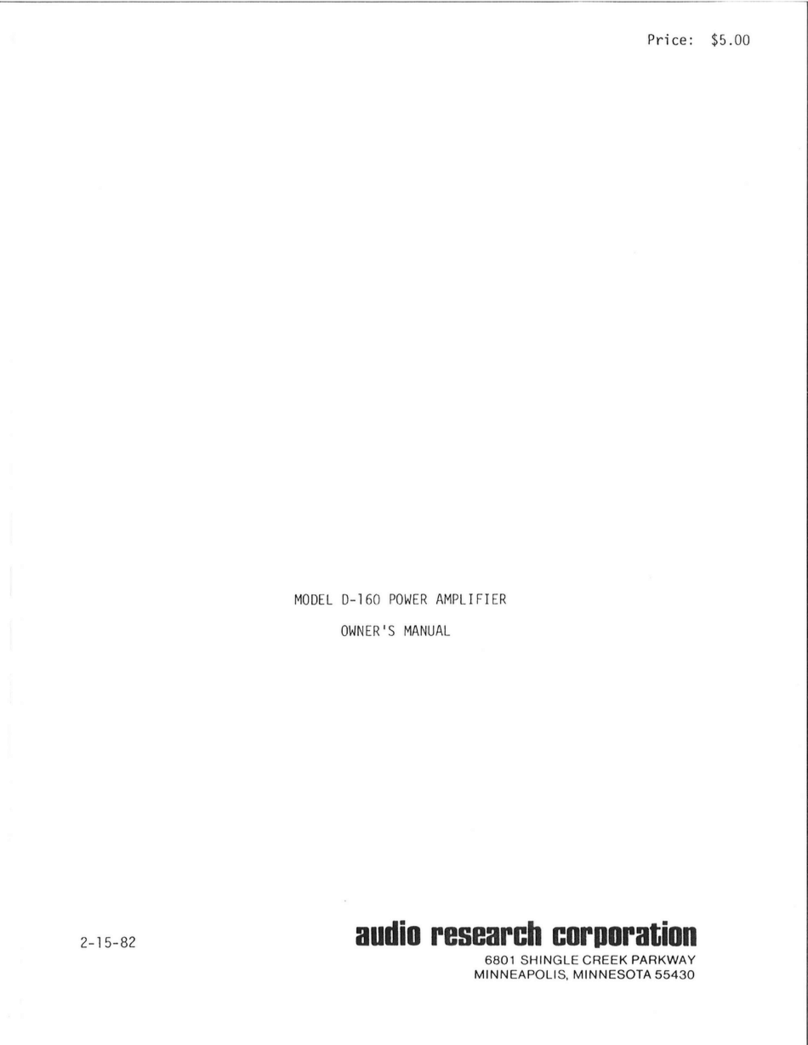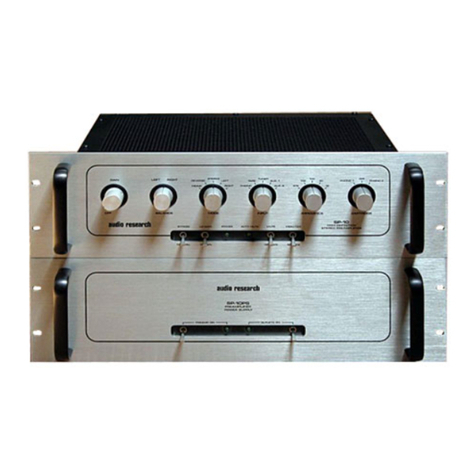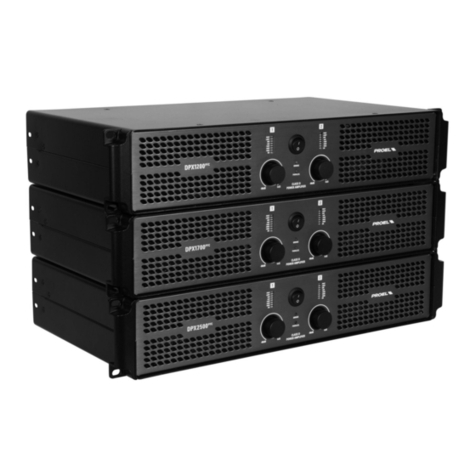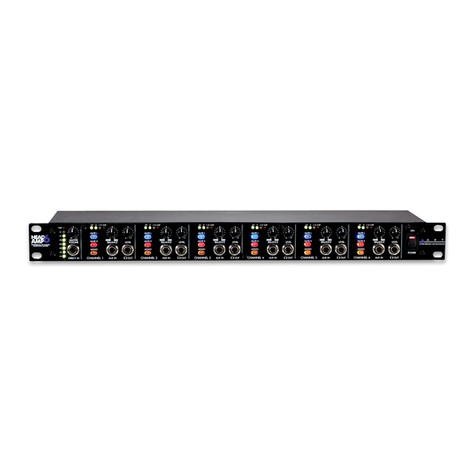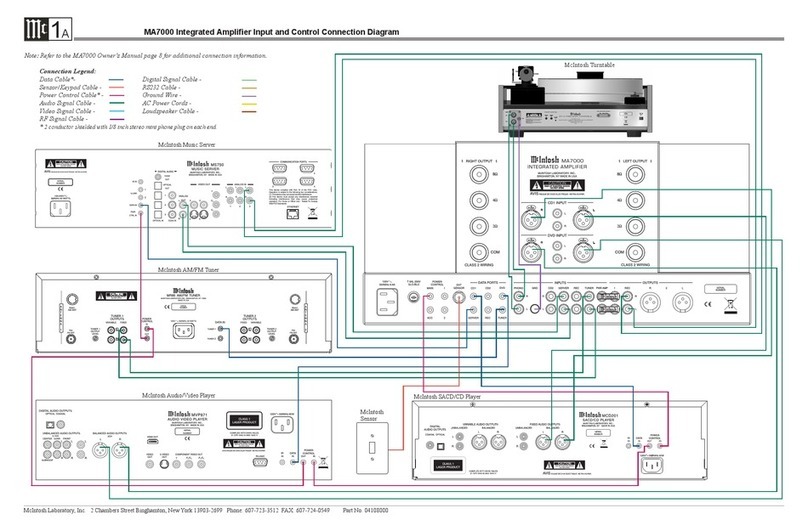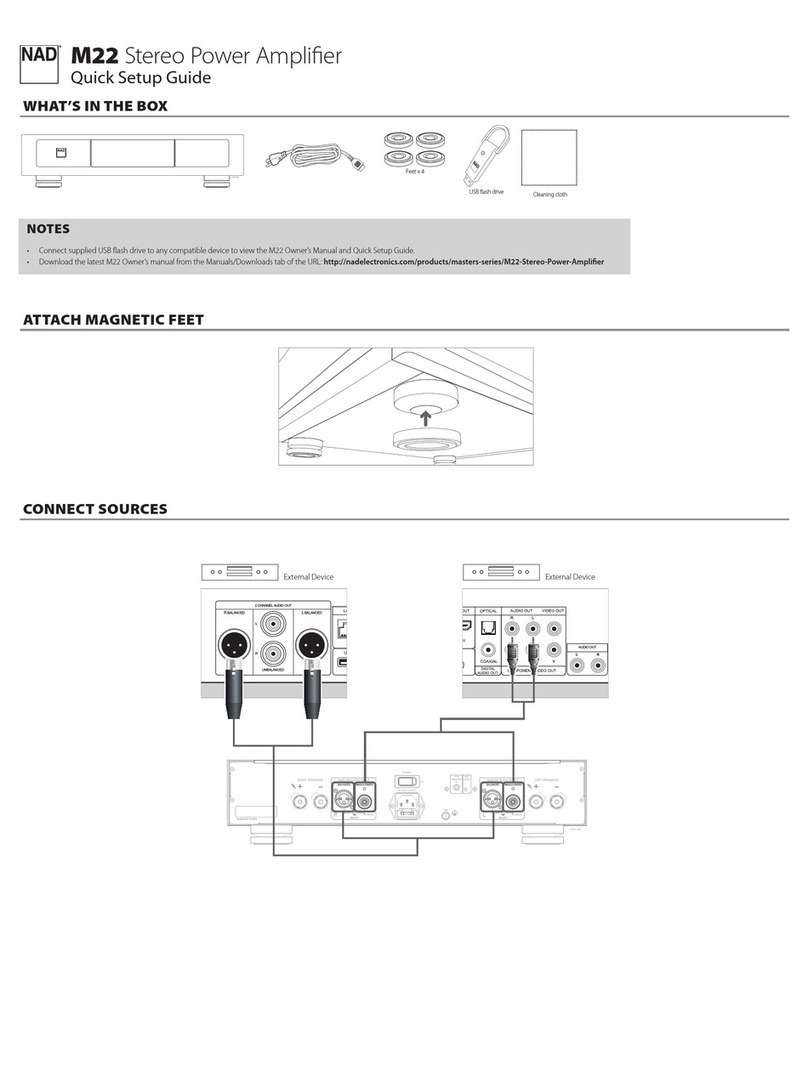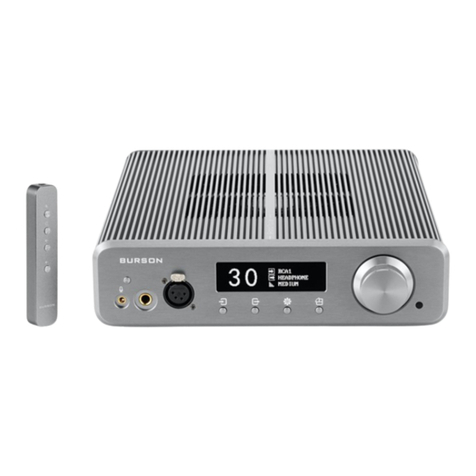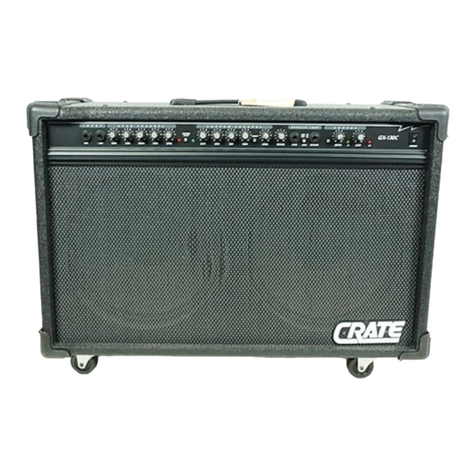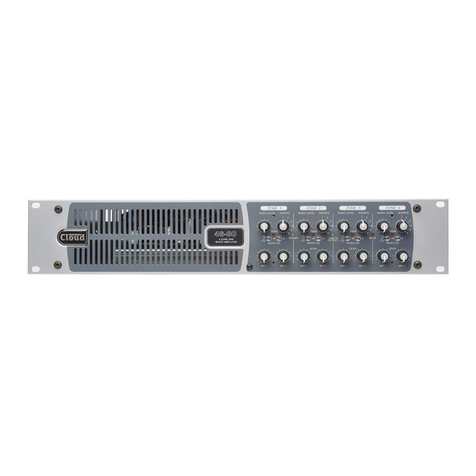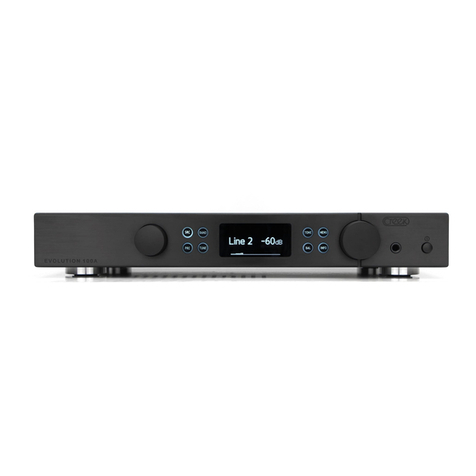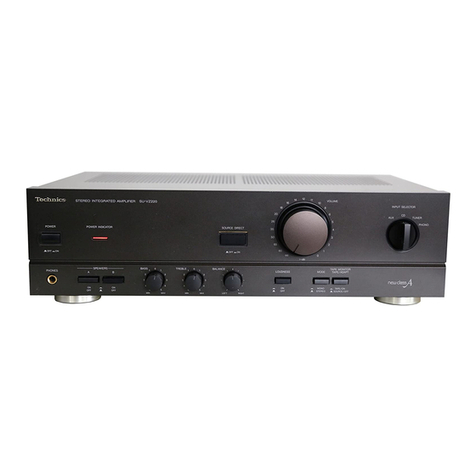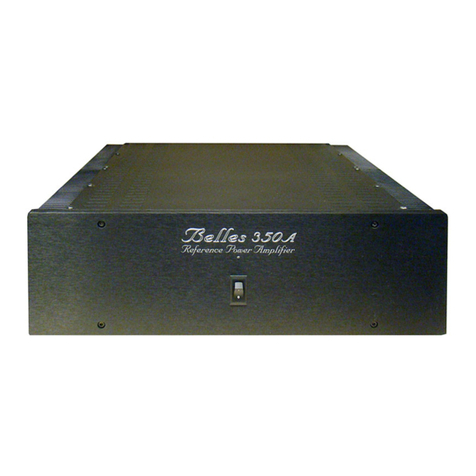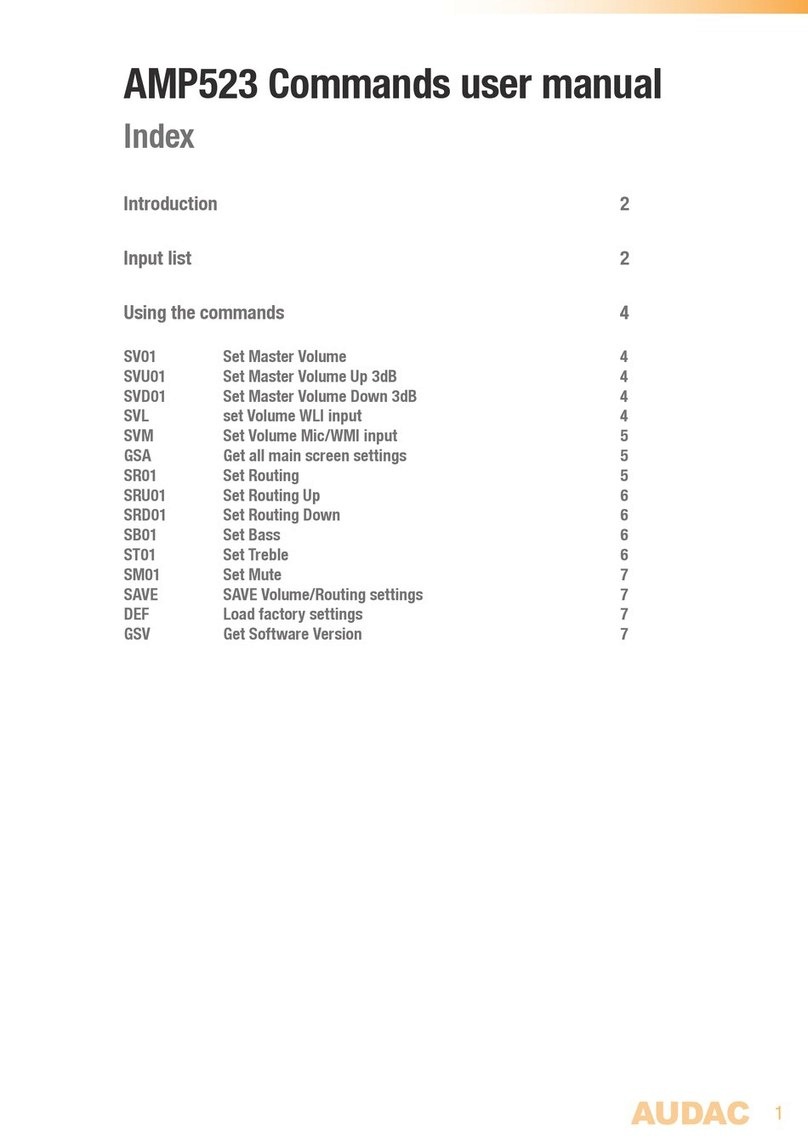
Model
VT100
2.
Carefully
remove
each
vacuum
tube
from
its
protective
foam
and match its location
"V''
number (writ-
ten on the base of the tube) to the
"V"
number printed
next to each socket on the circuit board
(see
accompany-
ing tube location diagram). Firmly seat each tube in its
matching socket. taking
care
to "key" the tube pins to
the
socket hole. Retain the foam blocks with other pack-
ing materials for possible future use.
3. Once
all
vacuum tubes have been installed, reposition
the
top cover assembly over the chassis and. fasten with
screws.
Note:
In
general. contact enhancers are not recommended
for use on vacuum tube contact pins. With continual expo-
sure to heat and air. these substances can form gummy.
dust-collecting residues which actually reduce contact and
degrade sonic performance. Proper external use of these
preparations -on interconnect plugs. speaker connections,
etc. -
is
subject to
the
discretion
of
the owner. Contact
Audio Research for specific recommendations.
Panel Controls
The
front
panel
has:
I - Switch:
I-
Powerline On-Off
I-lndicator:
I-
Power
"On"
LED
(Green)
Use
of
Controls
POWER
ON-
OFF
SWITCH, Initiates/terminates
AC
line
power to the amplifier. Power "On" function
is
indicated by
illuminated green
LED
above switch.
Note: Audio Research does
not
recommend leaving your
VT100 on
24
hours a day
as
is
the
custom
of
some audio-
philes to achieve maximum sonic performance on demand.
While this
is
often recommended for solid-state equipment,
Audio Research does not recommend this procedure for
vacuum tube power amplifiers. (2,000 hours oftube life will
pass by in 84
days!)
Installation
To insure normal component life
and
safe operation this
unit
must
be operated
only
in
a horizontal (upright) posi-
tion. Adequate air flow and proper cooling thereby can
occur only if there is no restriction around the unit. Allow
at
least 12 inches
of
unrestricted ventilation space above
the
VT100 top coverduring operation.
The
six
(6)
special
non-marring
elastomer
feet
provide adequate ventilation spacing only from a smooth,
hard surface. Never operate
the
unit
while
it
is sitting on
a soft, irregularsurface such as a
mg
or
carpet.
2
If
the
unit
is
to be operated in an enclosure such as an
equipment
rack.
make certain that adequate air flow above
and below the unit
is
provided. The ambient operating
temperature should never exceed l20°F
or
49°C. Audio
Research Corporation
Rack
Mount Ventilators
(RMV-3)
must be used above and below each unit. Improper installa-
tion will cause premature tube failure and will affect your
warranty. as well
as
the service life of the unit.
It
is
normal
for
a vacuum tube power amplifier to run quite
warm. and if used for prolonged periods. hot to the touch.
All
components within
are.
however. operated at safe.
con-
servative levels and will not be improperly affected there-
by,
providing
the
requirements
outlined
above
are
adhered to.
Connections
The
rear
panel
has:
2-
RCA
Input connectors for single-ended
connection. L& R
2-
XLR
Input connectors.
for
balanced connection. L& R
6 -Output binding posts (+) and
H.
L &
R.
for 4 or
8 ohm speaker connection
l
-Power
line cord
I -Power line fuse holder
IMPORTANT:
Use
the best available speaker wires and
in-
terconnects.
Audio Research
cannot
emphasize
this
enough.
As
better components and systems are developed.
it becomes increasingly important to avoid the limitations
of
inferior system interconnections.
For
best results
we
rec-
ommend
Audio
Research
LitzLink
2®
interconnects
and LitzLine
2®
speaker cables.
It
is important sonically that your entire system be con-
nected so that the audio signal arriving
at
the speakers has
correct, or "absolute" polarity
(i.e
..
non-inverted).·Connect
the black or "-" speaker terminal to the wire that connects
to the
"0"
terminal on the
VTlOO.
Connect the red or "+"
speaker terminal to the wire that connects to the "4" or
"8"
ohm impedance terminal on the VT100.
Use
the best avail-
able speaker cables and tighten all connections securely to
ensure best sonic results.
MATCHING:
It
is
important to use as close
as
possible an
impedance match between the amplifier and speaker for
optimum transfer of power to the speaker with minimum
distortion. In the case of speaker systems with significant
variations in impedance throughout
the
frequency spec-
trum. such as most electrostatic types. the best impedance
match should be determined by listening.












